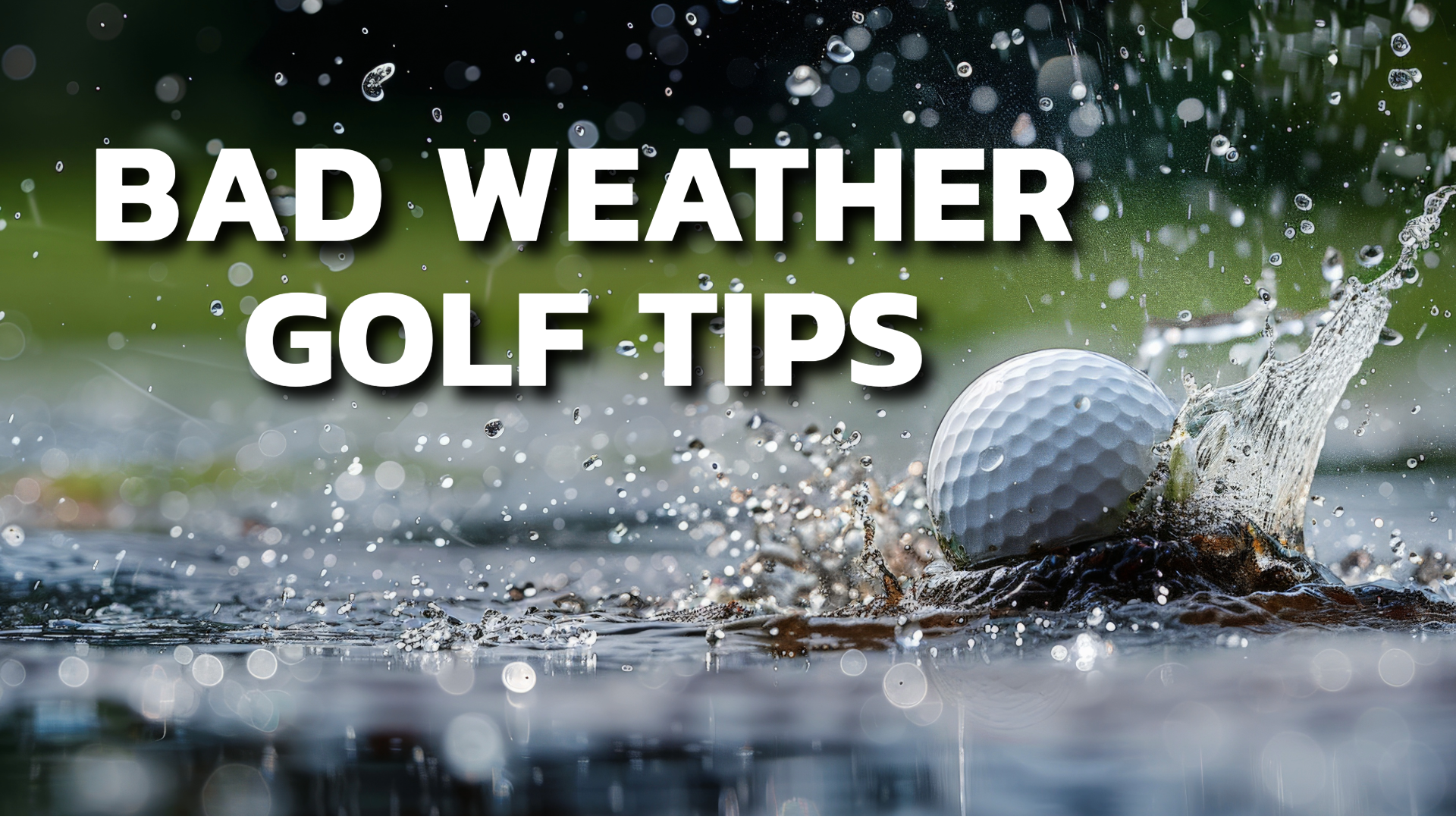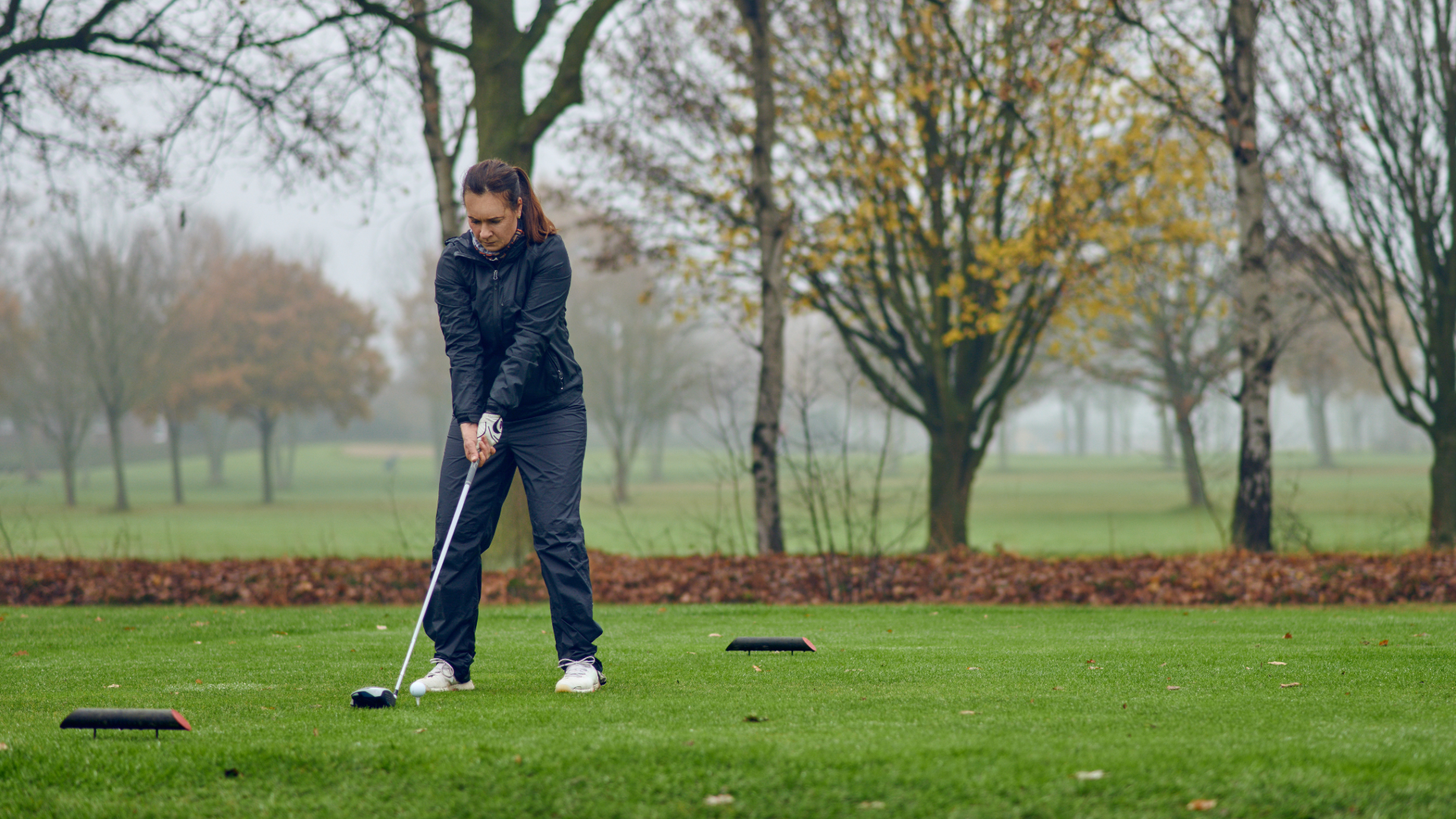
There’s nothing worse than a day of golf ruined by poor weather. While some golfers might stay home and hope for better days, you might be ready to take on the day and enjoy the course no matter what.
When you play in adverse conditions, these are some actionable tips and tricks to help you take control of your golf game regardless of the challenges. Don’t play your next bad weather round without reading through these tips, whether it’s rain, wind, cold or even an unmaintained course with a tough obstacle.
The Key to a Good Swing Lies in Your Hands
To play well, your hands need to stay dry and warm. Our hands are our only connection with the club, and when they are cold and wet, it becomes nearly impossible to make good contact with the ball. A good grip helps you maintain control, and wet or cold hands can hinder your golf swing.
To keep your hands ready for anything on the course:
- Carry multiple towels in your bag, one to keep your hands dry and warm and another for cleaning clubs and grips.
- Get a pair of high-quality rain gloves. They won’t need to be replaced as often as your regular golf glove, but they’re important to have.
- On colder days, use hand warmers between your shots to keep your fingers nimble. If you’ve seen the large golf mittens, they can be a good choice when riding in the cart.
- Most importantly, think about walking the golf course; you’ll stay a little warmer and have an easier time keeping your hands from getting too cold if you stay in motion.
Master the 3/4 Swing for Ball and Flight Control
When the weather isn’t great, a full swing can exaggerate errors. You may have a little slice, but then try to hit a big drive into the wind and see a much bigger slice that puts you in trouble. Instead, use a 3/4 golf swing.
With a 3/4 swing, you’ll have much more control, reduced spin, and more solid contact with the ball.
To master the 3/4 swing:
- While you can focus on shortening your backswing, keep your tempo smooth.
- If you are worried about distance loss, feel free to take an extra club; choose the 8-iron instead of the 9-iron, for example.
- Practice these 3/4 swings on the driving range. If you don’t want to save this, use it for the first time on the course. Put in a little time before bad weather comes your way so you are prepared.
Learn to Hit Punch Shots
Hitting a higher ball flight can be a great thing for getting the golf ball to stop on the green. However, if you hit a high ball flight on a windy day, you are subject to the wind’s unpredictable desires.
Learn to hit a punch shot to reduce trajectory and keep the ball under wind gusts.
To hit a punch shot:
- Play the ball slightly back in your stance, lean your weight onto your lead foot, and keep your hands ahead of the ball at impact.
- To help keep the flight down, use something with a slightly lower loft, like a 5 or 6 iron.
- You don’t need a full swing; you need to adjust the swing length to modify the shot distance.
- Finish low!
You can find an in depth guide on how to hit a punch shot here.
Adjust to the Green Speeds

Green speeds will change when they are wet vs dry. When playing in the rain, expect slower greens with more resistance, and commit to putting with a little more speed. Remember that a “good” missed putt ends up finishing just after the hole. Keep that in mind if you do end up missing the putt, and try to adjust on your next one.
If you are coming up short all day, it’s likely just because the green speeds are slowing down, and you haven’t adjusted accordingly.
When the conditions are windy, remember that crosswinds can push your ball slightly offline. In addition, putting downhill with a wind behind can make it even faster. Don’t grip the club too tightly; try to adjust and learn from the wind positions as you play your round.
Stay Dry to Improve Focus
When you are uncomfortable on the golf course (wet, cold, windburned), it’s very difficult to stay focused. Comfort and focus go hand in hand, so ensure you are prepared.
- Invest in waterproof gear, having rainproof jackets and pants that don’t restrict your swing will allow you to play in a variety of conditions.
- Keep an umbrella with you; even if you don’t use it personally, it can help keep your equipment dry.
- Using a waterproof bag cover for your clubs can help avoid water buildup on the grips. Wet grips are hard to hold and can lead to poor shots.
Learn to Play from the Sand
When the sand is wet, you must adjust your approach a bit. Wet bunkers require you to pick the ball clean rather than a full explosion shot with sand flying.
Work on treating these bunker shots more like pitch shots around the green, where you may even use a little less loft but just get the ball out and onto the putting surface.
Adjust Your Mental Game to Prepare for the Conditions
Tough conditions can be frustrating and may make you feel like you have no business being out on the course. However, the golfers who play the best in these conditions are often the ones who are the strongest mentally.
Staying calm and learning to adapt is a huge advantage, as not all players are able to do this. Try to focus on one shot at a time. Analyze the conditions for that shot and execute it to the best of your ability. Everyone faces these difficult conditions, but not all golfers know how to win the mental game.
Visualize the shot you want to hit and then confidently strike the ball.
Don’t Let Bad Weather Get You Down!
If you don’t want to miss a day on the course, you don’t have to. The key to playing golf in adverse conditions is to be prepared, and come with a strong mental game. Practice those punch shots and 3/4 swings before the next poor weather day. Invest in high-quality gear for the most difficult conditions and use it to stay dry, comfortable, and warm. Most importantly, don’t forget about the hands! They are the only connection with the club, and they need to be warm and dry to play your best golf.

